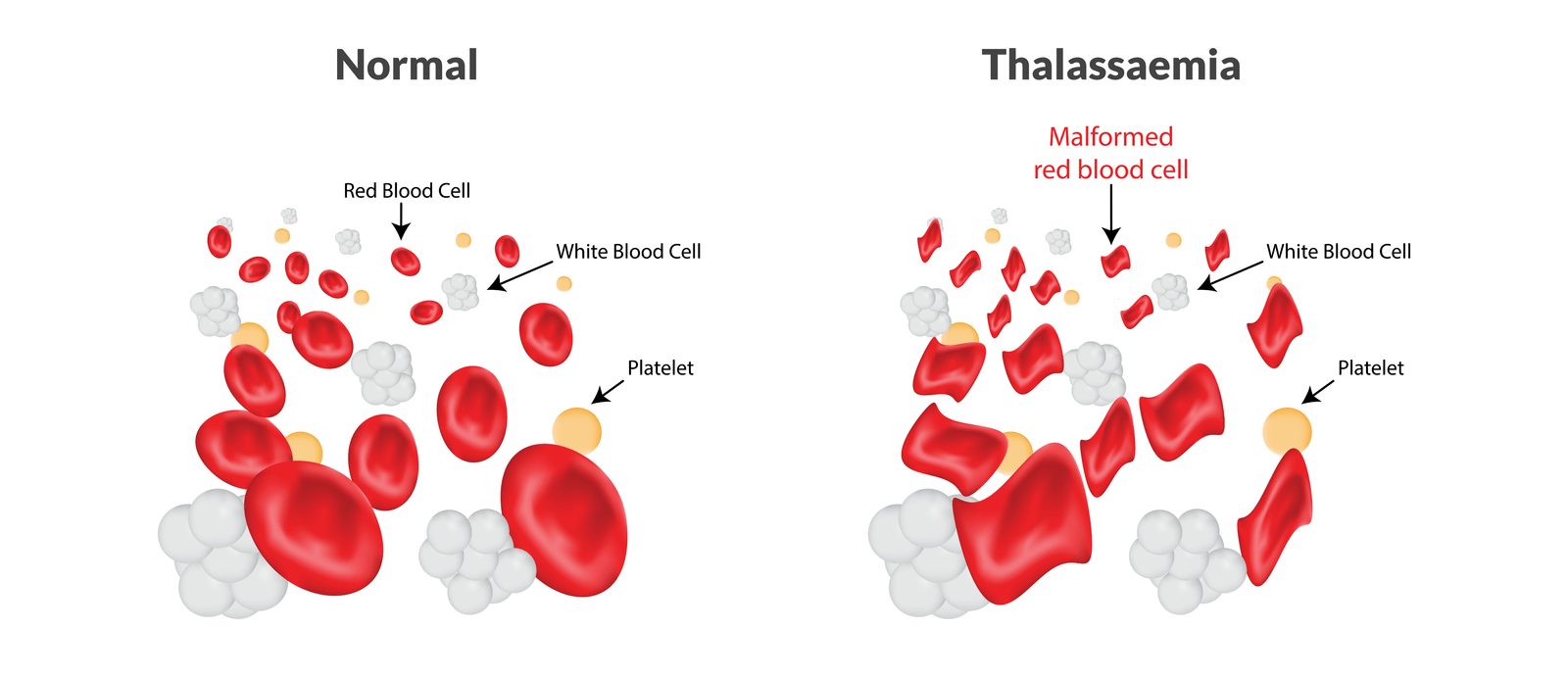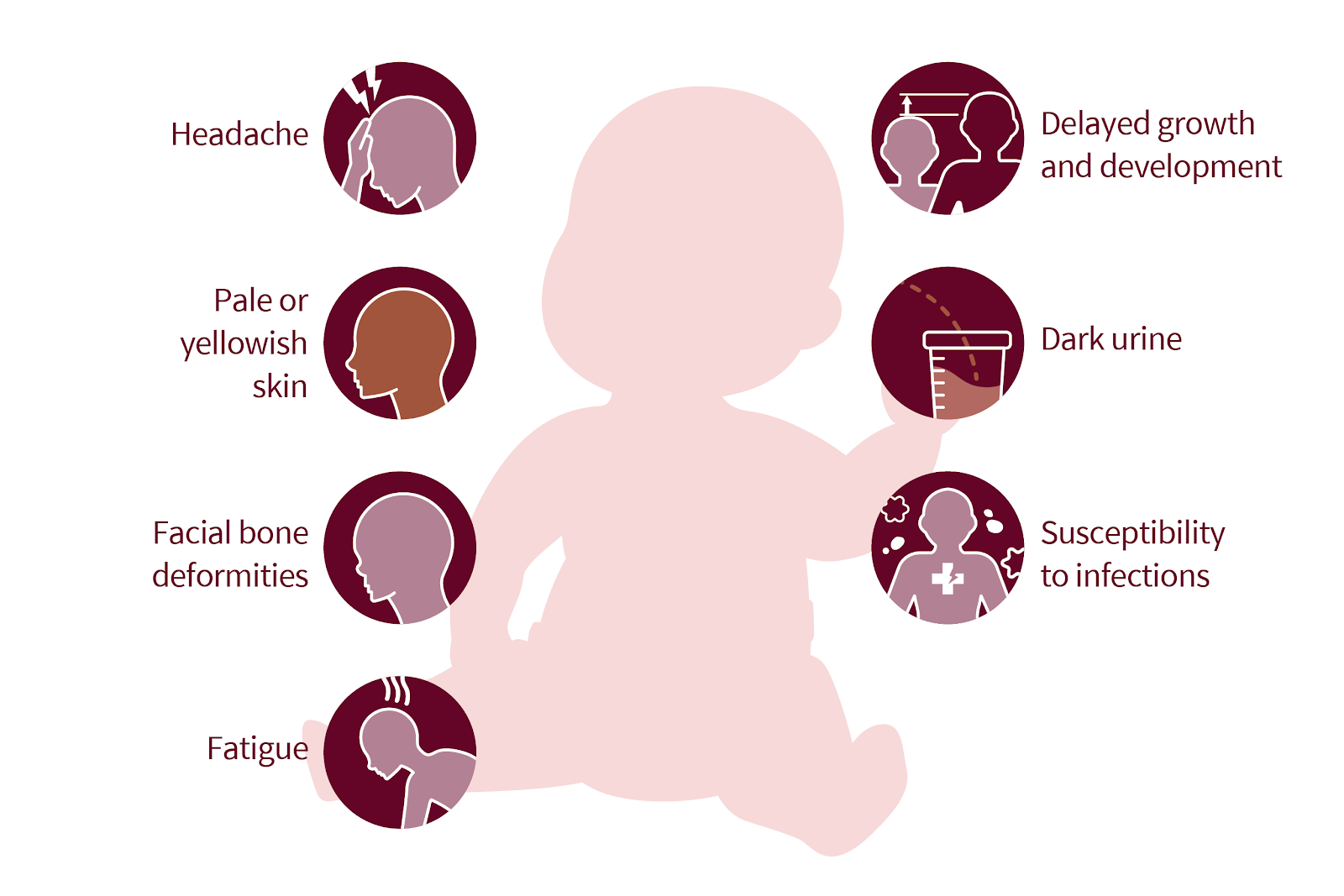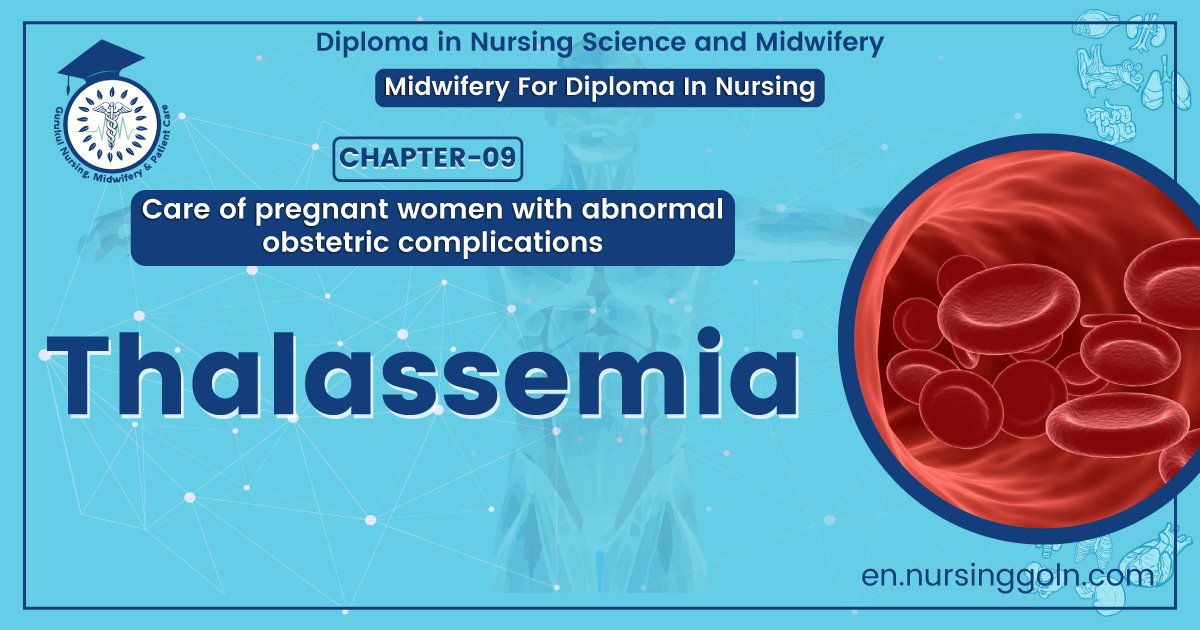Concept of Thalassemia – This course is designed to understand the care of pregnant women and newborn: antenatal, intra-natal and postnatal; breast feeding, family planning, newborn care and ethical issues, The aim of the course is to acquire knowledge and develop competencies regarding midwifery, complicated labour and newborn care including family planning.
Concept of Thalassemia
Thalassemia is a blood disorder passed down through families (inherited) in which the body makes an abnormal form of hemoglobin. Hemoglobin is the protein in red blood cells that carries oxygen. The disorder results in large numbers of red blood cells being destroyed, which leads to anemia.
or
Thalassemias are inherited blood disorders characterized by abnormal hemoglobin production. Symptoms depend on the type and can vary from none to severe.

Causes of thalassaemia in pregnancy:
➤ Thalassaemia cannot be caught from another person, only inherited from genes and may be passed from either parent to children.
➤ Beta thalassaemia decides to have children, they should find out if their partner is also a carrier. If positive, there’s a 25% chance a child would inherit beta thalassaemia from both parents, causing beta thalassaemia major that would have serious medical implications.
➤ Thalassemia is caused by mutations in the DNA of cells that make hemoglobin — the substance in red blood cells that carries oxygen throughout the body. The mutations associated with thalassemia are passed from parents to children.
➤ Thalassemia disrupts the normal production of hemoglobin and healthy red blood cells. This causes anemia. With anemia, blood doesn’t have enough red blood cells to carry oxygen to the tissues leaving women fatigued.
Risk factors of thalassemia in pregnancy:
➤ Heredity
➤ Spontaneous mutation
➤ Homozygous form of the disease
➤ Pathologic fractures
➤ Changes of facial bone structure
➤ Discoloration of skin due to iron deposits
➤ Severe anemia
➤ Absence of ẞ-chain synthesis in Hb production
➤ Hyperplasia of bone marrow
➤ Negative body image
➤ Autosomal recessive disorder.
Clinical features of thalassemia in pregnancy
➤ Fatigue
➤ Weakness
➤ Pale or yellowish skin
➤ Facial bone deformities
➤ Slow growth
➤ Abdominal swelling
➤ Dark urine

Treatments for mild thalassemia:
Signs and symptoms are usually mild with thalassemia minor and little, if any, treatment is needed. Occasionally, need a blood transfusion, particularly after surgery, after having a baby or to help manage thalassemia complications.
People with severe beta-thalassemia will need blood transfusions. And because this treatment can cause iron overload, they will also need treatment to remove excess iron. An oral medication called deferasirox (Exjade, Jadenu) can help remove the excess iron.
Treatments for moderate to severe thalassemia may include:
➤ Frequent blood transfusions: More-severe forms of thalassemia often require frequent blood transfusions, possibly every few weeks. Over time, blood transfusions cause a buildup of iron in blood, which can damage heart, liver and other organs. To help body get rid of the extra iron, women may need to take medications that rid body of extra iron.
➤ Stem cell transplant: Also called a bone marrow transplant, a stem cell transplant may be an option in select cases, including children born with severe thalassemia. It can eliminate the need for lifelong blood transfusions and drugs to control iron overload.
Manage fluid overload
➤ Iron chelating therapy (Deferral)
➤ 24 h urine collection after chelating therapy to estimate the amount of iron excreted
➤ Reassure the orange color is normal

Complications of thalassemia in pregnancy:
Possible complications of thalassemia include:
➤ Iron overload
➤ Infection
In cases of severe thalassemia, the following complications can occur:
➤ Bone deformities
➤ Enlarged spleen (splenomegaly
➤ Slowed growth rates
➤ Heart problems

Read More….
